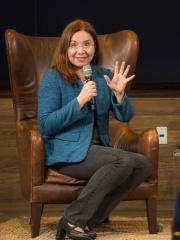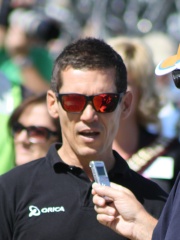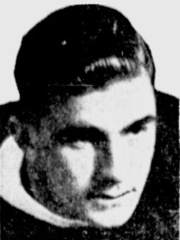POLITICAL SCIENTIST
Katharine Hayhoe
1972 - Today
 Katharine Hayhoe
Katharine Hayhoe
Katharine Anne Scott Hayhoe (born 1972) is a Canadian atmospheric scientist. She is a Paul Whitfield Horn Distinguished Professor and an Endowed Chair in Public Policy and Public Law at the Texas Tech University Department of Political Science. In 2021, Hayhoe joined the Nature Conservancy as Chief Scientist. Read more on Wikipedia
Her biography is available in 18 different languages on Wikipedia (up from 17 in 2024). Katharine Hayhoe is the 44th most popular political scientist (up from 46th in 2024), the 852nd most popular biography from Canada (up from 1,444th in 2019) and the 2nd most popular Canadian Political Scientist.
Memorability Metrics
Page views of Katharine Hayhoe by language
Among POLITICAL SCIENTISTS
Among political scientists, Katharine Hayhoe ranks 44 out of 46. Before her are Adam Przeworski, Olivier Roy, Sidney Verba, Ivan Krastev, Cass Sunstein, and Cas Mudde. After her are Pippa Norris, Alena V. Ledeneva, Claudine Gay, Ekaterina Schulmann, Bruce Gilley, and Salem Al Ketbi.
Most Popular Political Scientists in Wikipedia
Go to all RankingsAdam Przeworski
1940 - Present
HPI: 55.34
Rank: 38
Olivier Roy
1949 - Present
HPI: 54.97
Rank: 39
Sidney Verba
1932 - 2019
HPI: 53.44
Rank: 40
Ivan Krastev
1965 - Present
HPI: 50.37
Rank: 41
Cass Sunstein
1954 - Present
HPI: 49.77
Rank: 42
Cas Mudde
1967 - Present
HPI: 48.25
Rank: 43
Katharine Hayhoe
1972 - Present
HPI: 47.72
Rank: 44
Pippa Norris
1953 - Present
HPI: 45.21
Rank: 45
Alena V. Ledeneva
1964 - Present
HPI: 44.79
Rank: 46
Claudine Gay
1970 - Present
HPI: 44.68
Rank: 47
Ekaterina Schulmann
1978 - Present
HPI: 44.56
Rank: 48
Bruce Gilley
1966 - Present
HPI: 39.01
Rank: 49
Salem Al Ketbi
2000 - Present
HPI: 30.92
Rank: 50
Contemporaries
Among people born in 1972, Katharine Hayhoe ranks 624. Before her are Joachim Rønning, Kenji Wakamatsu, Mykola Oleshchuk, Salah Hissou, Álvaro Mesén, and Shaan. After her are Claudio Miranda, Abdelkrim El Hadrioui, Gülben Ergen, Robbie McEwen, Pascal Nouma, and Soi Cheang.
Others Born in 1972
Go to all RankingsJoachim Rønning
FILM DIRECTOR
1972 - Present
HPI: 47.75
Rank: 618
Kenji Wakamatsu
SOCCER PLAYER
1972 - Present
HPI: 47.75
Rank: 619
Mykola Oleshchuk
MILITARY PERSONNEL
1972 - Present
HPI: 47.74
Rank: 620
Salah Hissou
ATHLETE
1972 - Present
HPI: 47.74
Rank: 621
Álvaro Mesén
SOCCER PLAYER
1972 - Present
HPI: 47.74
Rank: 622
Shaan
SINGER
1972 - Present
HPI: 47.73
Rank: 623
Katharine Hayhoe
POLITICAL SCIENTIST
1972 - Present
HPI: 47.72
Rank: 624
Claudio Miranda
FILM DIRECTOR
1972 - Present
HPI: 47.71
Rank: 625
Abdelkrim El Hadrioui
SOCCER PLAYER
1972 - Present
HPI: 47.71
Rank: 626
Gülben Ergen
ACTOR
1972 - Present
HPI: 47.69
Rank: 627
Robbie McEwen
CYCLIST
1972 - Present
HPI: 47.69
Rank: 628
Pascal Nouma
SOCCER PLAYER
1972 - Present
HPI: 47.69
Rank: 629
Soi Cheang
FILM DIRECTOR
1972 - Present
HPI: 47.67
Rank: 630
In Canada
Among people born in Canada, Katharine Hayhoe ranks 853 out of 1,622. Before her are Tom Green (1971), Nellie McClung (1873), Robert Thirsk (1953), Bruce Fairbairn (1949), Hooley Smith (1903), and Roger Avary (1965). After her are Bruce LaBruce (1964), Deborah Ellis (1960), Eric Johnson (1979), George Lyon (1858), Peter Outerbridge (1966), and Luke Ford (1981).
Others born in Canada
Go to all RankingsTom Green
ACTOR
1971 - Present
HPI: 47.93
Rank: 847
Nellie McClung
POLITICIAN
1873 - 1951
HPI: 47.84
Rank: 848
Robert Thirsk
ASTRONAUT
1953 - Present
HPI: 47.84
Rank: 849
Bruce Fairbairn
MUSICIAN
1949 - 1999
HPI: 47.82
Rank: 850
Hooley Smith
HOCKEY PLAYER
1903 - 1963
HPI: 47.73
Rank: 851
Roger Avary
FILM DIRECTOR
1965 - Present
HPI: 47.73
Rank: 852
Katharine Hayhoe
POLITICAL SCIENTIST
1972 - Present
HPI: 47.72
Rank: 853
Bruce LaBruce
FILM DIRECTOR
1964 - Present
HPI: 47.63
Rank: 854
Deborah Ellis
WRITER
1960 - Present
HPI: 47.63
Rank: 855
Eric Johnson
ACTOR
1979 - Present
HPI: 47.59
Rank: 856
George Lyon
GOLFER
1858 - 1938
HPI: 47.57
Rank: 857
Peter Outerbridge
ACTOR
1966 - Present
HPI: 47.57
Rank: 858
Luke Ford
ACTOR
1981 - Present
HPI: 47.53
Rank: 859
Among POLITICAL SCIENTISTS In Canada
Among political scientists born in Canada, Katharine Hayhoe ranks 2. Before her are David Easton (1917). After her are Bruce Gilley (1966).
David Easton
1917 - 2014
HPI: 65.93
Rank: 1
Katharine Hayhoe
1972 - Present
HPI: 47.72
Rank: 2
Bruce Gilley
1966 - Present
HPI: 39.01
Rank: 3






































